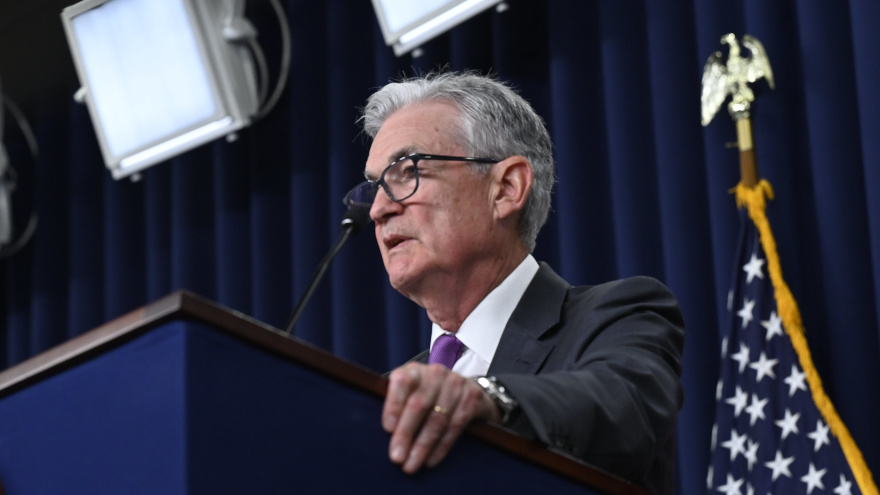Economists see more interest-rate rises ahead

Federal Reserve chair Jerome Powell is pictured during a news conference on July 26 in Washington, D.C. Image courtesy of the Federal Reserve.
At least three economists anticipate the Federal Reserve pushing interest rates higher after chairman Jerome Powell made one of his most anticipated speeches of the year last week.
The Fed’s annual gathering in Jackson Hole, Wyo., was the backdrop on Friday when Powell delivered his remarks, generating reaction from Cox Automotive chief economist Jonathan Smoke as well as chief economist Bill Adams and senior economist Waran Bhahirethan of Comerica Bank.
In his weekly commentary posted on Monday, Smoke wrote that Powell “gave no clear indication of a shift ahead in monetary policy. Powell affirmed that the Fed was prepared to raise rates further if needed and would leave rates at a restrictive level until ‘…inflation is moving sustainably down toward our objective.’
“However, he also acknowledged that recent data have shown progress,” Smoke added.
Adams and Bhahirethan offered a similar reaction on the same day Powell appeared out West.
“Chair Powell was overall hawkish, implying further rate hikes are likely before year-end. He said the Fed intends to maintain their 2% inflation target and not raise it as some financial commentators have speculated,” Adams and Bhahirethan wrote.
“The Fed is wholly committed to bringing inflation back to this target and will raise rates ‘if appropriate’ until they are confident inflation is ‘moving sustainably’ towards its target. Powell emphasized the high bar for data to convince the Fed that inflation is cooling,” Adams and Bhahirethan went on to say.
In his prepared remarks, Powell reiterated why this span of economic activity is different than others policymakers have encountered.
“The supply and demand dislocations unique to this cycle raise further complications through their effects on inflation and labor market dynamics. For example, so far, job openings have declined substantially without increasing unemployment — a highly welcome but historically unusual result that appears to reflect large excess demand for labor,” Powell said.
“In addition, there is evidence that inflation has become more responsive to labor market tightness than was the case in recent decades. These changing dynamics may or may not persist, and this uncertainty underscores the need for agile policymaking,” he continued.
“These uncertainties, both old and new, complicate our task of balancing the risk of tightening monetary policy too much against the risk of tightening too little,” Powell went on to say. “Doing too little could allow above-target inflation to become entrenched and ultimately require monetary policy to wring more persistent inflation from the economy at a high cost to employment. Doing too much could also do unnecessary harm to the economy.”
Powell concluded his remarks by looking forward to what the Fed could do for the remainder of the year.
“As is often the case, we are navigating by the stars under cloudy skies. In such circumstances, risk-management considerations are critical,” he said.
“At upcoming meetings, we will assess our progress based on the totality of the data and the evolving outlook and risks. Based on this assessment, we will proceed carefully as we decide whether to tighten further or, instead, to hold the policy rate constant and await further data,” Powell continued.
“Restoring price stability is essential to achieving both sides of our dual mandate. We will need price stability to achieve a sustained period of strong labor market conditions that benefit all,” he added.

 View The Latest Edition
View The Latest Edition

